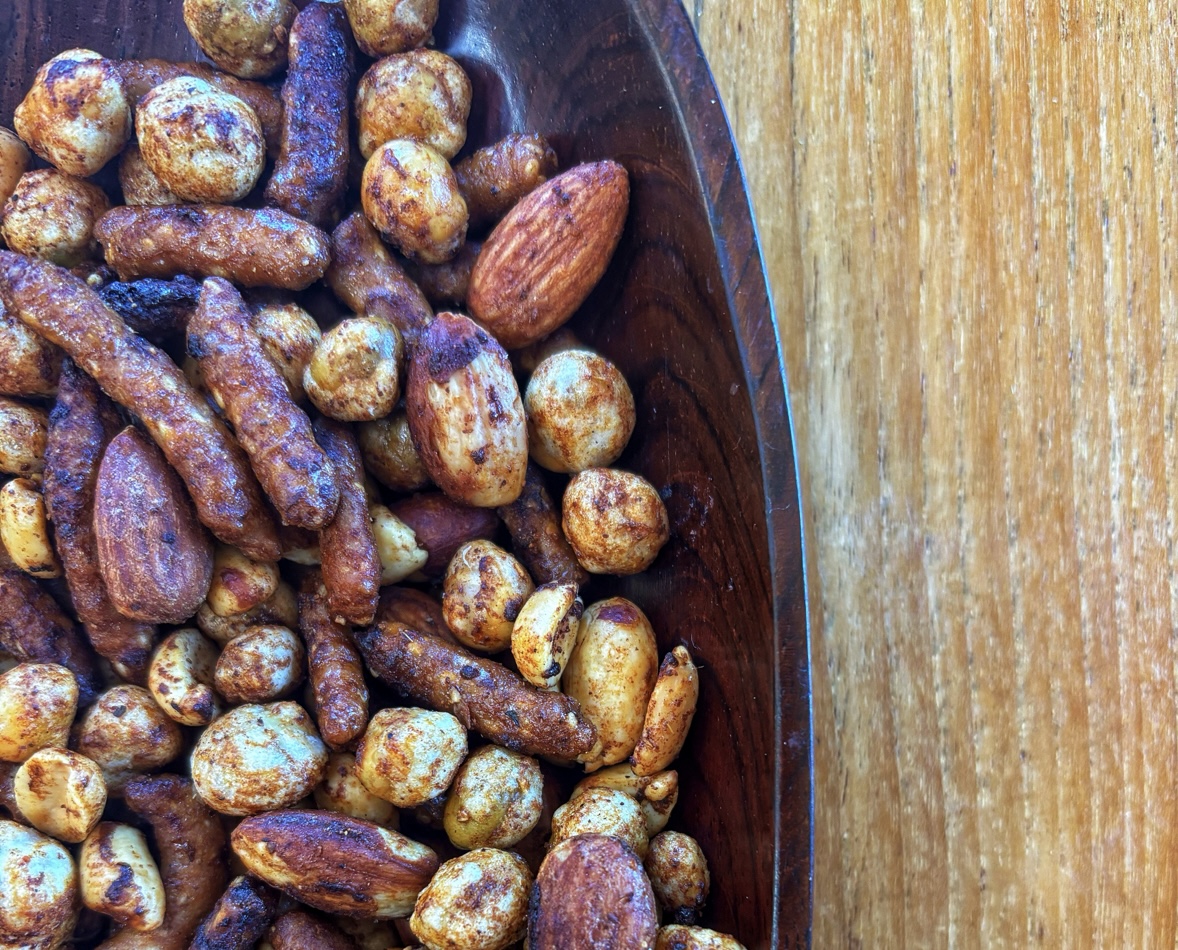According to the 2010 Dietary Guidelines for Americans, and the launch of the new MyPlate logo (which replaced the Food Pyramid), half our plate should consist of fruits and vegetables. The agency’s new logo – a plate – clearly shows the need to cut down on meats and up our intake of fruits and vegetables. Truthfully, I’ve never paid much attention to daily servings of fruits, vegetables and more, simply because we are pretty good at eating. But, with the introduction of the new USDA Choose My Plate logo, I decided to give it a try.
Using the USDA website, I calculated exactly how much my kids needed to consume daily – a 1½ cups of fruit and 1½ cups of vegetables. Without even thinking about it, I knew that the fruits were no problem, but I wasn’t so sure about the veggies. So I set out to monitor what they ate veggie-wise, measuring what they were served before the meal, and then weighing the leftovers on their plate. It was an exhausting, time-consuming exercise that I eventually gave up after about 5 days. But, I didn’t even need the full five days of data, I knew after just one day how we stacked up to the USDA recommendations. And, I wasn’t happy about it.
@@page
On average, we came up nearly 1/2 cup short on veggies each day. But, I am sure I’m like most Americans, aware of the recommended daily allowances, but not too attuned to ensuring those daily amounts ar e met.
For some time I have had the desire to add more non-meat meals into our weekly menu, but usually fall back on my usual favorite recipes just so I don’t have to hear the kids scream in unison, “Is this all we’re having?? I want something else!” Perhaps this would be the kick in the pants that would get me moving on making vegetables more exciting for the family. But how would I do it? With four kids, each with different likes and dislikes (along with Keely who has to be continually coaxed to get some veggies in her), I was at a loss as to how to do it.
First, I looked hard at our daily habits. Dinnertime was the meal we consumed most of our vegetables. We never consumed vegetables for breakfast, and for lunch we ate a couple of carrots or cucumbers, but nothing significant. And then there is snack time. The kids have become accustomed to afternoon snacks of crackers and fruit, occasionally cheese for the two who like it. Rarely did I put veggies out, and when I do, I get, “Is this all we’re having for snack?”
That leaves dinnertime. But, I could hardly expect my kids to eat a full 1 ½ cups of vegetables in one sitting. I needed to spread it across the day, giving them a chance to nibble here and nibble on them.
@@page
It was time for me to crack the whip, get brave, and get out of the rut. It was time for me to turn to our friends atMelissa’s, Robert Schueller and Chef Miki, who helped us on our Family Eats Challenge a while back.
“Help!” I pleaded. “I need some suggestions on how to get more veggies into our lives.” They were quick to respond, providing me with lots of great suggestions.
“It is a challenge in trying to get America to eat a half a plate of veggies and fruits for every meal…. its hard to attempt such a goal when the average American only eat 1/6 of a plate of produce at every meal, if that, now,” explained Schueller.
Added Chef Miki, “I found that anytime you show how unusual or interesting the vegetable is, the more the kids became interested. Make it cool! At least they’d try it ONCE. Some items you need to try a few times before their palate really knows whether they like it or not, according to scientists.”
@@page
Here are Chef Miki’s Tips (for getting younger kids to eat their veggies)
- As you know, people (as we are ALL kids) love to ‘dip’ their food into sauces, dressings, etc. Try all of the veggies as a kiddie crudités platter with low fat yogurt in place of sour cream. Or, limit the amount of dressing by placing in a deep, narrow cup (simulating a ketchup packet), or put dressing in a narrow-hold squeeze bottle and squeeze it over the veg (like a squiggle). If your kids like Italian dressing or salsa, use that-it is usually lower in calories than the creamy dressings. You can even do a fruit vinaigrette.
- A small veggie garden is fun too, and the kids take interest in what they grow and will soon eat.
- Kids like to use their fingers and hands instead of a utensil, so make the items finger friendly.
- Create a face, car, or other object with a combination of the vegetables. @@page
Some ideas for making vegetables enticing
- Edamame beans lined up make a nice necklace, or in-shell edamame make earrings
- Jicama can be sliced into discs (about 1/4″ thick, or thinner) and then use small cookie cutters for shapes. You may need to help/supervise with the project if the cutter blades are sharp or the disks are too thick. Cut into rounds then top with a smaller piece of veggie for the iris of the eye.
- If you have a mandoline, slice the baby cucumbers (with skin on) thin and use them as a wrapper around meat or cheese, around a tomato stack, etc. They are nice and flexible at this point and can be ribbons. That could be a cute bowtie with two looped and weighted in the center with a cherry tomato (cut just a small part of the bottom to make tomato flat), or overlapped as hair. I always liked cucumbers as spears or rounds or oval (cut on a bias).
- Baby potatoes are fun just as they are. Why not also try fingerling potatoes (they look like gnarled old lady and old man fingers) and are just the right size to snack upon or dip. Purple fingerling potatoes are cool and actually one of the oldest in the world!
- Corn kernels are great for clown teeth, especially if you’re lucky enough to get a chunk of the kernels when you cut form the cob. They’re also yummy with a little chopped bell pepper, or cold in a rice vinegar dressing with black beans and tomatoes. If you have the strength to cut the cob into round disks (use a serrated knife and cut when the corn is raw), these are playful and can be wagon wheels. Keep your eyes peeled for red corn and bi-colored (white and yellow on the same cob) corn.
- Carrots can be eyes, wheels, buttons, polka dots, etc. or shredded as hair for an animal or person.
Stay tuned for some more suggestions from Melissa’s next week, when we move beyond snack time to vegetables served at mealtime.


